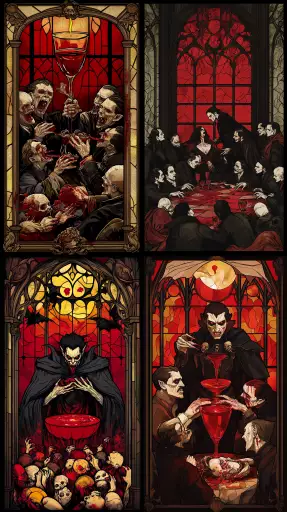Explore the Best AI Image Gallery

A Brush with AI: Exploring the Impact of AI-Generated Images on Art
The realm of art has always been a canvas for human expression, creativity, and imagination. But in recent years, a new player has entered the scene – artificial intelligence (AI). With its ability to generate stunningly realistic and imaginative images, AI is revolutionizing the way we create, consume, and perceive art. This blog post delves into this fascinating intersection, exploring the multifaceted impact of AI-generated images on the art world.
The Potential Uses: A World of Creative Possibilities
AI-powered image generation tools offer a vast array of possibilities for artists, designers, and anyone with a creative spark. Some of the most exciting applications include:
- Concept Visualization: Artists can use AI to quickly generate multiple visual interpretations of their ideas, helping them refine their concepts and explore different directions.
- Style Transfer: AI algorithms can transfer the artistic style of one image onto another, allowing artists to experiment with diverse aesthetics and create unique mashups.
- Image Editing and Enhancement: AI-powered tools can automate tedious editing tasks, such as removing blemishes or adjusting lighting, freeing up artists to focus on the creative aspects of their work.
- Accessibility for All: AI can empower individuals with disabilities who may face challenges in traditional artistic mediums. Text-to-image generators allow anyone to express themselves visually, regardless of physical limitations.
The Ethical Considerations: Navigating Uncharted Territory
While AI offers immense creative potential, it also raises important ethical questions that need careful consideration:
- Authorship and Ownership: When an AI generates an image, who owns the copyright? The programmer, the user who provided the input, or the AI itself? This legal gray area requires further clarification.
- Bias and Representation: AI algorithms are trained on vast datasets, which can reflect existing societal biases. This can result in AI-generated images that perpetuate harmful stereotypes or lack diversity.
- Job displacement: As AI becomes more sophisticated, there are concerns that it could automate certain artistic tasks, potentially leading to job losses in the creative industry.
- Authenticity and Value: The increasing prevalence of AI-generated art raises questions about the value and authenticity of human-created artwork. How do we define the essence of art in an age where machines can mimic human creativity?
Future Trends: The Evolution of AI and Art
The field of AI-generated art is constantly evolving, with new advancements emerging at a rapid pace. Some future trends to watch for include:
- More Realistic and Detailed Images: AI algorithms will continue to improve, producing images that are even more realistic and intricate.
- Personalized Art Experiences: AI can be used to create personalized artwork tailored to individual preferences and tastes.
- Interactive and Immersive Art: AI-powered art installations will blur the lines between reality and virtuality, offering interactive and immersive experiences.
- Cross-Disciplinary Collaboration: AI will bridge the gap between different artistic disciplines, enabling new forms of creative expression.
Conclusion: Embracing the Artistic Potential of AI
AI-generated images are reshaping the art world in profound ways. They offer incredible opportunities for creativity, innovation, and accessibility while raising important ethical considerations that require thoughtful dialogue. As AI technology continues to evolve, it will be crucial to foster a collaborative environment where artists, technologists, and ethicists work together to harness the full artistic potential of AI.



](https://images.ai-img.art/thumbnails/150/f67d9af3398150f2ab1bcf250717fea134275e2ca896252b54a4d9bb3719f9ac.webp)













](https://images.ai-img.art/thumbnails/150/4289d1230b86a96c4d556636c3167bed0ef38f850826549517e4e45db4d87bf7.webp)
](https://images.ai-img.art/thumbnails/150/c2c9c48b38fae37f0a457b80b084ed01ba803810fc8f488c8f610c03abc74049.webp)
















](https://images.ai-img.art/thumbnails/150/bddf3ae4a232290858389b933c866ad3be429ef2e25c23a9f4d7713ed6e44d0b.webp)


](https://images.ai-img.art/thumbnails/150/008b5d5d49667cc2e93a5f8a8adfaa545963da99c39ff0901f5296294636400d.webp)


](https://images.ai-img.art/thumbnails/150/f9584153b4cddd8c9fab611dc10247549b275c59bc173251e37d0935874f9deb.webp)